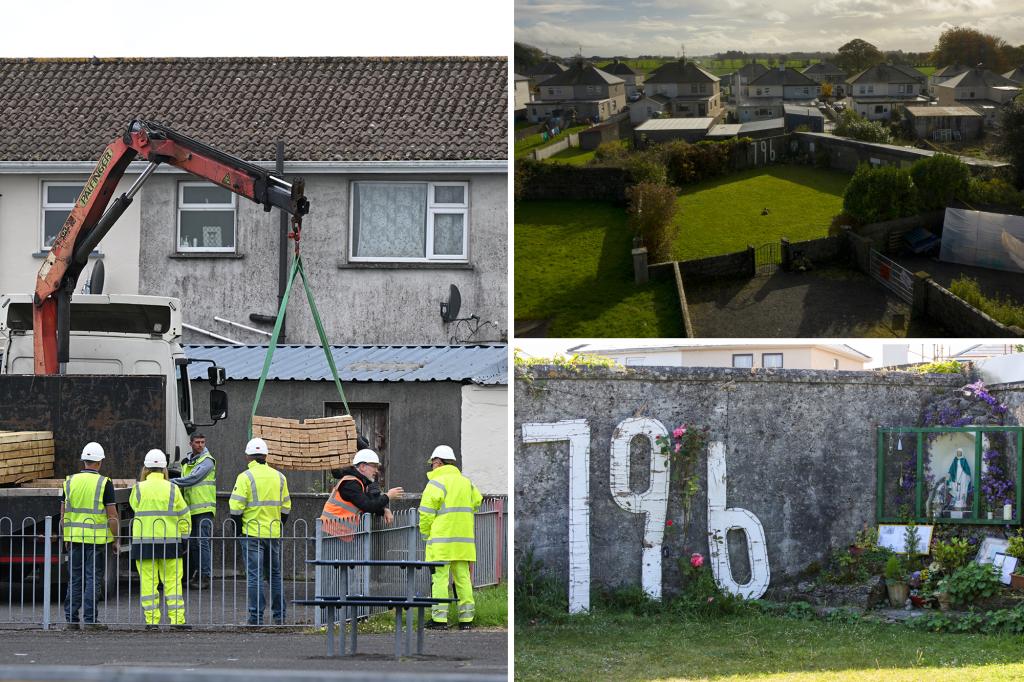
Excavation has commenced at a site in Tuam, County Galway, Ireland, where authorities believe the remains of nearly 800 children are buried. These children died at a home for unwed mothers run by Catholic nuns, known as the Bon Secours Mother and Baby Home. The investigation follows years of research and advocacy by local historian Catherine Corless, who brought the tragic history of the site to light.
Corless’s findings indicate that 798 children died at the home between 1925 and its closure in 1961, with only two having been buried in a nearby cemetery. The rest are feared to have been discarded in a septic tank, ominously referred to as “the pit,” at the former institution. The site, now surrounded by a modern apartment complex, has remained largely untouched since the building’s demolition in 1971.
The Tragic History of Bon Secours
The Bon Secours Mother and Baby Home was a maternity home for unmarried mothers, operated by a religious order of Catholic nuns. Women who became pregnant out of wedlock were sent to the home to give birth and were often forced to stay for a year, performing unpaid labor. Their children were typically separated from them and raised by the nuns until they were adopted, frequently without family consent.
The full extent of the tragedy only came to public attention in 2014, thanks to Corless’s diligent research. Her work suggested that the children’s final resting place was a disused septic tank discovered in 1975. Despite the grim findings, it wasn’t until 2022 that legislation was passed allowing the excavation to begin.
Excavation and Identification Process
More than a decade after Corless’s revelations, a team of investigators has started a forensic examination of the site. This meticulous process is expected to take up to two years, aiming to identify the remains and provide a dignified reburial, offering some closure to the families affected.
“I don’t care if it’s a thimbleful, as they tell me there wouldn’t be much remains left; at six months old, it’s mainly cartilage more than bone,” said Annette McKay, whose sister is believed to be among the victims.
McKay’s mother, Margaret “Maggie” O’Connor, gave birth to a daughter at the home after being raped at 17. The child, Mary Margaret, died six months later, and her mother only learned of her death when informed by a nun in a callous manner.
A Broader Context of Oppression
The Bon Secours home is one of many institutions that formed a network of oppression in Ireland, the full scope of which has only recently been uncovered. Women who had additional children out of wedlock were often sent to Magdalene laundries, notorious institutions for so-called “fallen women,” run by Catholic orders but tacitly supported by the state.
Initially intended for sex workers, these laundries eventually housed “seduced” women, victims of rape and incest, and female orphans. The last of these institutions closed in the 1990s, marking the end of a dark chapter in Irish history.
The commission report concluded that 9,000 children had died in similar homes across Ireland.
Government Response and Survivors’ Compensation
In 2014, the Irish government issued a formal apology for the state’s role in these institutions. By 2022, a compensation scheme was established, distributing the equivalent of $32.7 million to 814 survivors. However, the religious orders that operated many of these homes have refused to contribute financially to the program, despite appeals from victims and Ireland’s Justice Minister.
The excavation at Tuam represents a significant step towards acknowledging and addressing the injustices faced by the women and children who suffered in these institutions. As the investigation continues, it is hoped that it will bring some measure of peace and recognition to those affected by this harrowing chapter of history.







